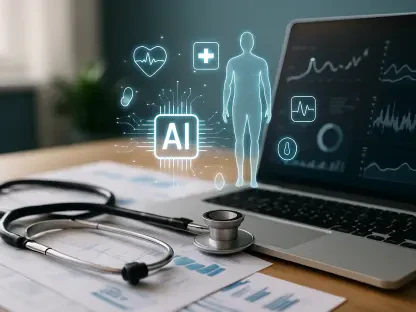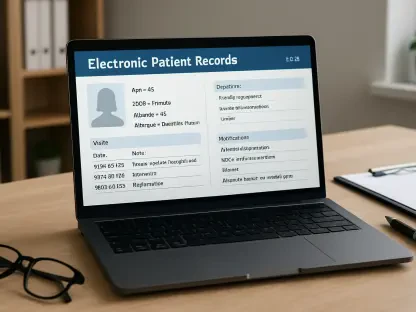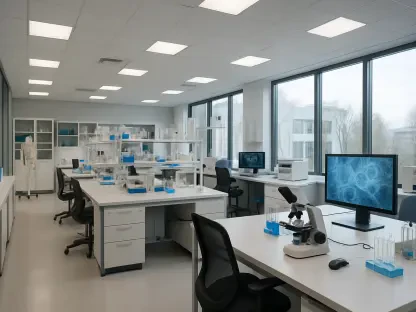In a world where healthcare continuously evolves, the testing and diagnostics services industry stands at a crucial intersection of innovation and necessity. The demand for these services remains stable, driven by factors like an aging population and the rise of chronic diseases. As individuals increasingly prioritize preventive healthcare, the industry supports hospitals, clinics, and consumers by providing essential diagnostic information and laboratory services. The sector’s inherent mission to detect, monitor, and prevent diseases makes it an indispensable part of healthcare systems worldwide. Companies such as Quest Diagnostics and their market peers are integral players in this ecosystem, with the industry expected to grow consistently in the coming years. However, while the future appears promising, the landscape is fraught with both opportunities and challenges that will shape its trajectory in significant ways. Understanding these dynamics is essential for stakeholders navigating an environment characterized by rapid technological advancements and complex regulatory frameworks.
Demand Dynamics and Industry Growth
The testing and diagnostics industry is buoyed by several fundamental demand factors. The aging population naturally requires more health screenings and diagnostic assessments, contributing to steady industry growth. Additionally, the increasing prevalence of chronic diseases further amplifies this need, as ongoing management and monitoring are vital for patient care. Public awareness campaigns about preventive healthcare have also inspired a proactive approach to health management, encouraging regular screenings and tests. These factors collectively foster a recurring revenue stream for companies, derived from services like routine lab tests and diagnostic imaging. Importantly, revenue generation is supported through a complex mix of funding, such as reimbursements from Medicare, Medicaid, private insurance, and out-of-pocket payments. This multifaceted funding model ensures that the industry remains resilient amid economic fluctuations.
Yet, mitigating challenges persist in this seemingly robust growth environment. A significant obstacle is the downward pricing pressure driven by intense competition and regulatory demands, which can strain profit margins. To combat these pricing pressures, companies need substantial resources to maintain compliance with intricate regulatory standards. The necessity for continual investment in new testing technologies further strains financial and operational capacities while striving to remain competitive. Moreover, firms must manage their cost structures wisely against the backdrop of reimbursement uncertainties and increased competition from decentralized testing solutions, such as home testing kits. This competitive landscape compels industry participants to strategically allocate investments while ensuring efficiency and cost-effectiveness.
Technological Advancements and Innovation
Technological innovation stands as a driving force in shaping the future of the testing and diagnostics industry. The development of personalized medicine marks a significant trend, wherein treatments and diagnostic services are tailored to individual patient profiles. These personalized approaches necessitate precise and specialized diagnostics, increasing demand for advanced tests and services. Additionally, the rise in popularity of at-home testing kits introduces increased accessibility and convenience for health monitoring, catering to modern consumer needs for swift health insights without traditional healthcare setting constraints. Rapid diagnostic tests likewise contribute to faster diagnoses and treatments, improving patient outcomes.
Advanced technologies such as artificial intelligence (AI) further amplify the sector’s potential by enhancing diagnostic accuracy and efficiency. AI-driven tools can analyze vast datasets with precision beyond human capacity, minimizing errors and expediting results. Such technological integration is expected to revolutionize diagnostics, enabling healthcare providers to make more informed decisions. Despite these promising developments, they introduce new complexities. For instance, the growing reliance on technology requires significant investment and strategic implementation to yield intended benefits. Moreover, as AI becomes more deeply woven into diagnostic processes, concerns around data privacy, security, and ethical use emerge, presenting additional layers of complexity that must be navigated by industry stakeholders.
Strategic Challenges and Market Positioning
Amid promising trends, significant challenges, or ‘headwinds,’ temper the optimistic outlook for the diagnostics industry. Companies face reimbursement uncertainties that impact financial predictability, as changes in healthcare policies may alter reimbursement structures and rates unexpectedly. Furthermore, competition from decentralized testing solutions introduces the risk of market share dilution for established firms, as consumers increasingly opt for home-based solutions over traditional lab tests. The evolving regulatory environment demands heightened scrutiny over test validity and cost-effectiveness, necessitating rigorous compliance measures and adaptations by companies. These factors collectively underscore the importance of strategic agility in maintaining a competitive edge.
Corporate performance in the recent earnings reports highlights these dynamics. Quest Diagnostics reported strong revenue growth, supported by strategic acquisitions and high demand from enterprise accounts. Their expansive diagnostic portfolio and increased health plan access further bolstered their robust financial results. However, despite exceeding analysts’ expectations in terms of revenue, the share prices of companies in the industry reflect a market sentiment wary of these underlying challenges. This disconnect between financial performance and market perception illustrates the complexities inherent in this sector.
Navigating the Future
In today’s rapidly evolving healthcare landscape, the testing and diagnostics services industry finds itself at a pivotal junction of innovation and necessity. Factors such as an aging population and a rise in chronic diseases drive a stable demand for these essential services. As society increasingly prioritizes preventive healthcare, hospitals, clinics, and consumers rely heavily on diagnostic information and laboratory services. This sector’s crucial role in detecting, monitoring, and preventing illnesses positions it as an indispensable component of global healthcare systems. Industry leaders like Quest Diagnostics and others are vital contributors within this ecosystem, poised for consistent growth in the years ahead. Yet, with this promising outlook comes a range of opportunities and challenges that will significantly influence its progression. Understanding the complexities of rapid technological advancements and intricate regulatory frameworks is vital for stakeholders seeking to navigate and thrive in this dynamic environment.









